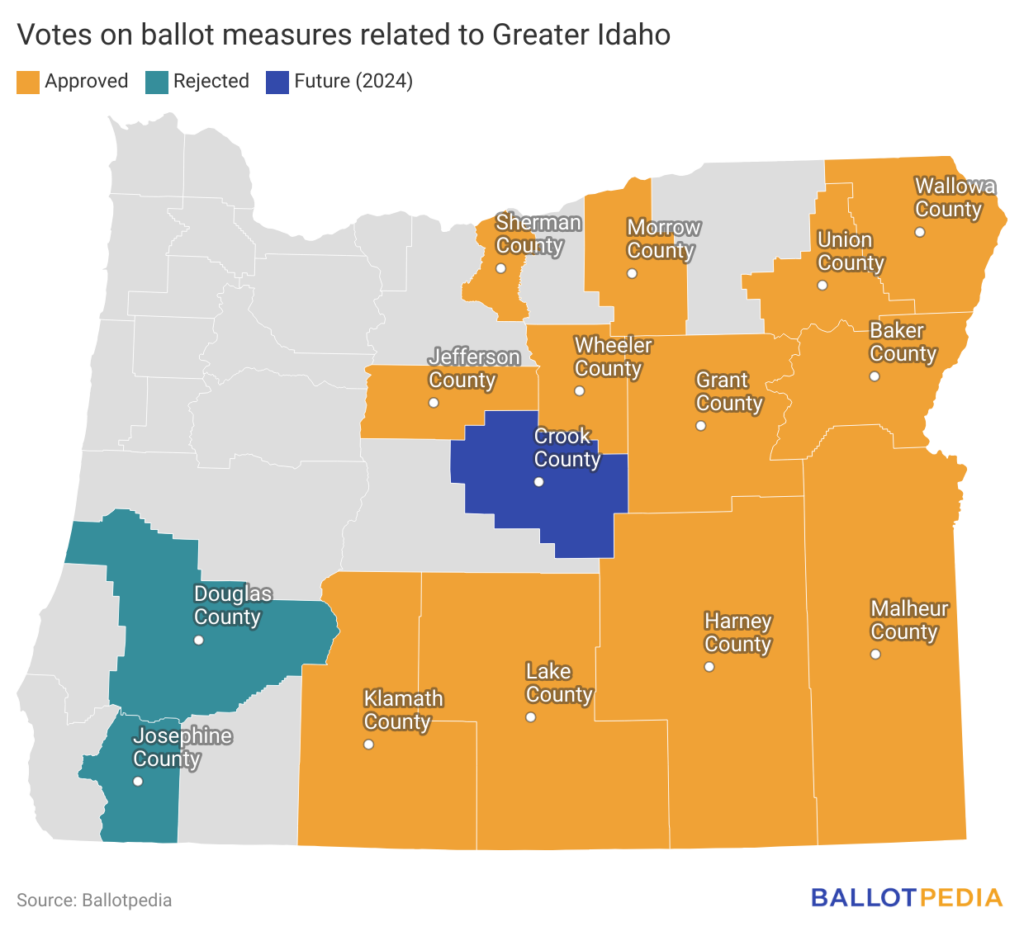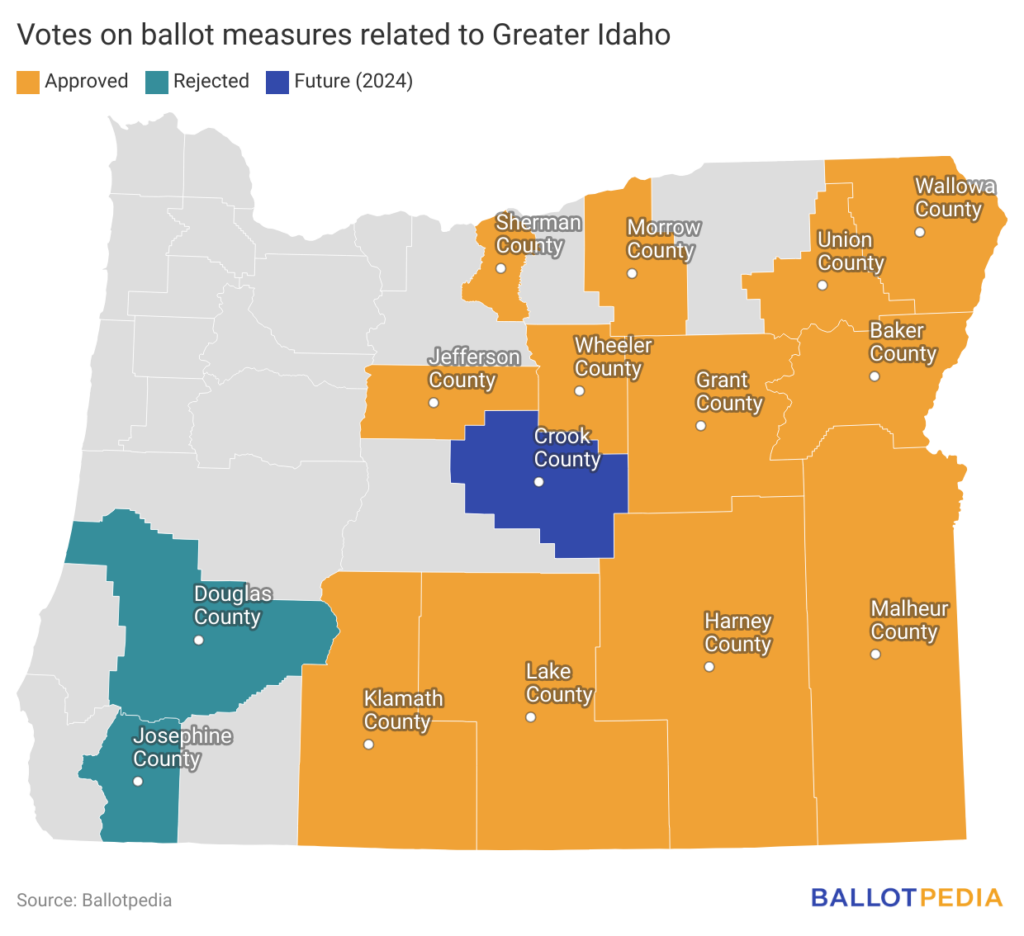Voters in Crook County, Oregon, will be voting on a measure on May 21 that asks whether they support negotiations to incorporate the county into the state of Idaho. Since 2013, voters in California, Colorado, and Oregon have decided on measures regarding counties joining other states or forming new states. Voters in one Illinois county will consider a similar measure in November.
The Crook County ballot measure, Measure 7-86, will ask: “Should Crook County represent that its citizens support efforts to move the Idaho state border to include Crook County?”
While the measure itself is advisory and would not change any state boundaries upon approval, it will be the 17th time since 2020 that a county in Oregon has voted on a measure to secede from the state and join neighboring Idaho. Supporters refer to this effort as Greater Idaho.
Since 2020, there have been 16 total ballot measures voted on in Oregon by counties to secede from the state to join Idaho. Voters in 12 counties—Baker, Grant, Harney, Jefferson, Klamath, Lake, Malheur, Morrow, Sherman, Union, Wallowa, and Wheeler—approved ballot measures regarding seceding from Oregon to join Idaho. Voters rejected ballot measures in two counties — Douglas and Josephine. In Wallowa County, voters rejected a measure in 2020 before approving a measure in 2023.


While the countywide ballot measures themselves cannot cause counties to join Idaho, they are written as non-binding questions or as ordinances requiring Boards of Commissioners to hold meetings on Greater Idaho or advocate for moving the state’s borders. To change state boundaries, approval is required from the U.S. Congress and state legislatures of Oregon and Idaho, per the U.S. Constitution, Article I, Section 10, and Article IV, Section 3.
The last time that Oregon’s borders were changed was in 1958. In 1957, Oregon and Washington drafted an interstate compact called the Oregon-Washington Columbia River Boundary Compact. Congress approved the compact. Both states also needed to amend their state constitutions to adjust the boundaries. Voters approved SJR 10 in Washington. In Oregon, voters approved Measure 1 on the same election date—Nov. 4, 1958.
Since 2013, there have been local ballot measures in at least three other states proposing a secession of counties from the state.
In 2013, 11 counties in Colorado voted on whether to pursue the creation of a 51st state. The 11 counties that had questions on the ballot were Weld, Logan, Sedgwick, Phillips, Washington, Yuma, Elbert, Lincoln, Kit Carson, Cheyenne, and Moffat. These counties comprised approximately 350,000 residents, which would have formed the smallest state in the United States. The measure asked voters if the commissioners of each county should work with the other counties in northeastern Colorado to pursue the division of Colorado into two states, with the new state being called North Colorado. Out of the 11 counties, five counties—Phillips, Kit Carson, Yuma, Cheyenne, and Washington—approved the measures, while six counties—Elbert, Lincoln, Weld, Sedgwick, Logan, and Moffat—rejected the ballot measures to create a new state.
Between 2014 and 2016, voters in four counties in California voted on measures to secede from the state of California to create a 51st state called Jefferson, which is intended to consist of counties in northern California and southern Oregon. Before 2014, voters in Modoc County, Glenn County, and Yuba County approved these measures. In 2014, voters in Del Norte County rejected the measure by 58.14%-41.86%, and voters in Siskiyou County rejected the measure by 55.50%-44.50%. Voters in Tehama County, however, approved the measure by 56.91%-43.09%. In 2016, voters in Lassen County rejected a measure by 56.16%-43.84%.
While the above examples are all in the western U.S., Madison County, Illinois, will be deciding on a measure in Nov. on whether to advise the county board to discuss with other county boards, excluding Cook County, the possibility of forming a new state separate from Cook County, which is where Chicago is located.


